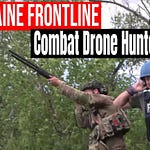I’m Patrick Lancaster, and right now, I’m on a train heading to Kursk, where major developments are unfolding. Russia has almost completely expelled Ukrainian forces that entered the region in August last year. After months of intense fighting, what was once a 1,500 square kilometer incursion by Ukraine has been systematically reduced by Russian forces, with the last major Ukrainian stronghold reportedly falling yesterday.
While there are still small groups of Ukrainian fighters hiding in basements, their presence is no longer strategically significant. However, Ukraine still controls some territories outside the city, and Russian forces are actively working to remove them from what is internationally recognized as Russia’s Kursk region.
Ceasefire Talks Amid Military Gains
As Russia continues its offensive, the political landscape is also shifting. Ukraine has suddenly agreed to a ceasefire proposal put forward by Donald Trump—a drastic shift from Zelensky’s previous stance. This is notable given Trump’s recent confrontation with Zelensky in the Oval Office, where he told the Ukrainian president outright that “you’re losing the war”.
Now, with Ukraine losing not just in Kursk but also in Donetsk and other key territories, Kyiv is looking for a way out. However, the real question is: Does this ceasefire truly benefit Russia?
Yes, peace means fewer people dying, and that’s always a positive outcome. But on the battlefield, Russia is gaining momentum, taking villages daily in Donetsk, securing more islands in the Kherson region, and pushing through Ukrainian defenses in multiple areas.
Will Russia Accept the Ceasefire?
Reports indicate that Trump’s team expects Putin to come back with a counteroffer, likely reinforcing Moscow’s longstanding demands:
The complete withdrawal of Ukrainian forces from Russian territory, as defined by Russian law—including Kursk, Donetsk, Lugansk, Zaporizhzhia, and Kherson.
Security guarantees ensuring Ukraine will not receive Western weapons during the ceasefire.
Formal recognition of Russia’s territorial claims by Ukraine.
Putin made it clear last year what his conditions for a ceasefire would be, and Zelensky has already refused to comply. So while Russia is winning on the ground, this ceasefire could create a political deadlock—with neither side fully agreeing to the terms.
What’s Next?
At this point, we have to wait and see what happens. Will Trump’s proposal be accepted? Will Russia agree to terms that don't favor its strategic position?
For now, I’m on my way to Kursk, where I’ll be bringing you firsthand reports from the frontlines and civilian areas. The last few days have been pivotal for Kursk, and while I haven’t arrived yet, I’ll be catching up on everything that has unfolded.
As always, I’m completely independent and crowdfunded—my reporting is only possible through the support of my viewers. I don’t work for any news agencies, and I’m not financed by any media corporations. If you appreciate real on-the-ground reporting, please consider supporting my work by donating or subscribing to my Substack.
There’s a lot more to come, and I’ll be the only independent English journalist reporting from Kursk. Stay tuned for real, uncensored updates from the ground.
We’re out.
Stay Updated & Support Independent Journalism
🚨 Watch the full live breakdown & original reports on YouTube
📩 Subscribe to my Substack for exclusive deep-dive articles & videos
💰 Support my jurnalism– Independent journalism relies on youm!🚨 War crimes must be exposed. The world needs to see the truth. 🚨













Share this post